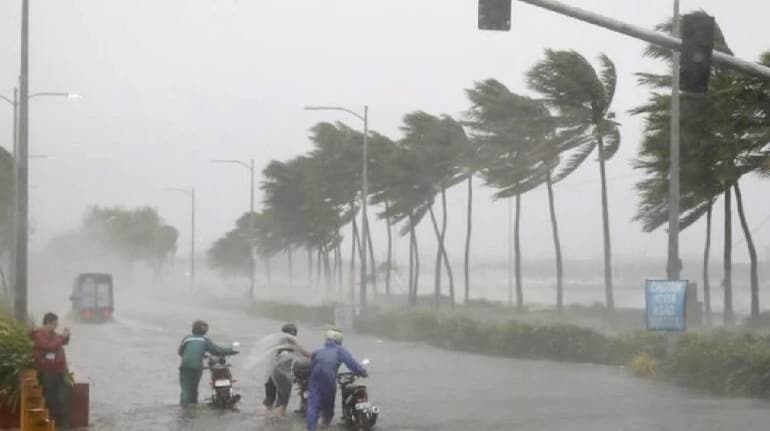
A new report by the Government of India reveals that local climate change is influenced not only by the increase in greenhouse gases but also by the increase in air pollution and the local changes in the land-use pattern. The report goes on to warn that the rapid changes in India’s climate will place increasing stress on the country’s natural ecosystems, agricultural output, and fresh water resources, while also causing escalating damage to infrastructure and economy.
The Ministry of Earth Sciences’ (MoES) ‘Assessment of Climate Change over the Indian Region’ is the first-ever attempt to document and assess climate change in different parts of India. The report describes the observed changes and future projections of precipitation, temperature, monsoon, drought, sea level, tropical cyclones, and extreme weather events.
The report is edited by scientists of the Indian Institute of Tropical Meteorology, Pune, and unlike the UN Intergovernmental Panel on Climate Change (IPCC) assessment reports that are global, this report looks at regional climate change projections based on the IITM Earth System Model and Coordinated Regional Climate Downscaling Experiment datasets.
According to the report, India’s average temperature has risen by around 0.7°C during 1901–2018 and projects that the frequency of summer (April–June) heat waves over India will be 3 to 4 times higher (approximately 4.4°C) by the end of the 21st century as compared to the 1976–2005 baseline period. This in turn will lead to a high likelihood of an increase in the frequency and intensity of droughts (>2 events per decade), compounded by the increased variability of monsoon precipitation and increased water vapour demand in a warmer atmosphere.
The seasonal monsoon rains during the June-September months, which contribute to more than 75 percent of the annual rainfall, and are vital for India’s agriculture and economy, has declined by around 6 percent from 1951 to 2015, with notable decreases over the Indo-Gangetic Plains and the Western Ghats. There also has been a shift in the recent period toward more frequent dry spells (27 percent higher during 1981–2011, relative to 1951–1980) and more intense wet spells during the summer monsoon season.
This trend of increasing year-to-year rainfall variability will disrupt rain-fed agricultural food production that will adversely impact food security in the future.
The report further cautions that the growing propensity for droughts and floods because of changing rainfall patterns caused by climate change would be detrimental to surface and groundwater recharge, posing threats to the country’s water security.
At the end of the 21st century, sea level in the North Indian Ocean (NIO) is projected to rise by approximately 300 mm relative to the average over 1986–2005, with the corresponding projection for the global mean rise being approximately 180 mm. Low-lying coastal zones, especially on India’s east coast, may witness rising sea levels damaging property and increasing groundwater salinity. A rise in cyclone intensities will result in increasing inundation from the accompanying storm surges that will turn coastal agricultural lands and lakes saline, and imperil wildlife.
Climate models also project a rise in the intensity of tropical cyclone intensity and precipitation in the NIO basin during the 21st century. Already, observations indicate that frequency of extremely severe cyclonic storms (ESCS) over the Arabian Sea has increased during the post-monsoon seasons of 1998–2018. Cyclone Nisarga that devastated parts of Maharashtra coastline earlier this month practically proves that the climate modelling in this report is remarkably accurate.
The report observes that the Himalayas and the Tibetan Plateau have experienced a temperature rise of about 1.3°C during 1951–2014. The warming trend has been particularly pronounced over the Hindu Kush Himalaya (HKH), which is the largest area of permanent ice cover outside the North and South Poles. Popularly known as the ‘Third Pole’, the meltwater generated from the Himalayan glaciers supplies the rivers and streams of the region, including the Indus, Ganges, and Brahmaputra river systems of India. These rivers collectively provide about 50 percent of the country’s total utilisable surface water resources. Several areas of the HKH have experienced a declining trend in snowfall and also retreat of glaciers in recent decades. By the end of the 21st century, the annual mean surface temperature over the HKH is projected to increase by about 5.2°C.
Finally, the report concludes that rising temperatures are also likely to increase energy demand for space cooling, which if met by thermal power would constitute to global warming by increasing greenhouse gas emissions. Moreover, a rise in water withdrawal by power plants would directly compete with water withdrawal for agriculture and domestic consumption, particularly in water-stressed areas.
On the other hand, power plants located around the coast that use seawater for cooling are vulnerable to damage from sea-level rise, cyclones, and storm surge. In short, climate change could impact the reliability of the country’s energy infrastructure and supply.
Although this path-breaking report is not intended to be ‘policy prescriptive’, the message is clear — in the absence of rapid, informed and far-reaching mitigation and adaptation measures, the impacts of climate change are likely to pose profound challenges to sustaining the country’s rapid economic growth and achieving the sustainable development goals.
Shailendra Yashwant is senior adviser, Climate Action Network South Asia (CANSA). Twitter: @shaibaba. Views are personal.

Discover the latest business news, Sensex, and Nifty updates. Obtain Personal Finance insights, tax queries, and expert opinions on Moneycontrol or download the Moneycontrol App to stay updated!